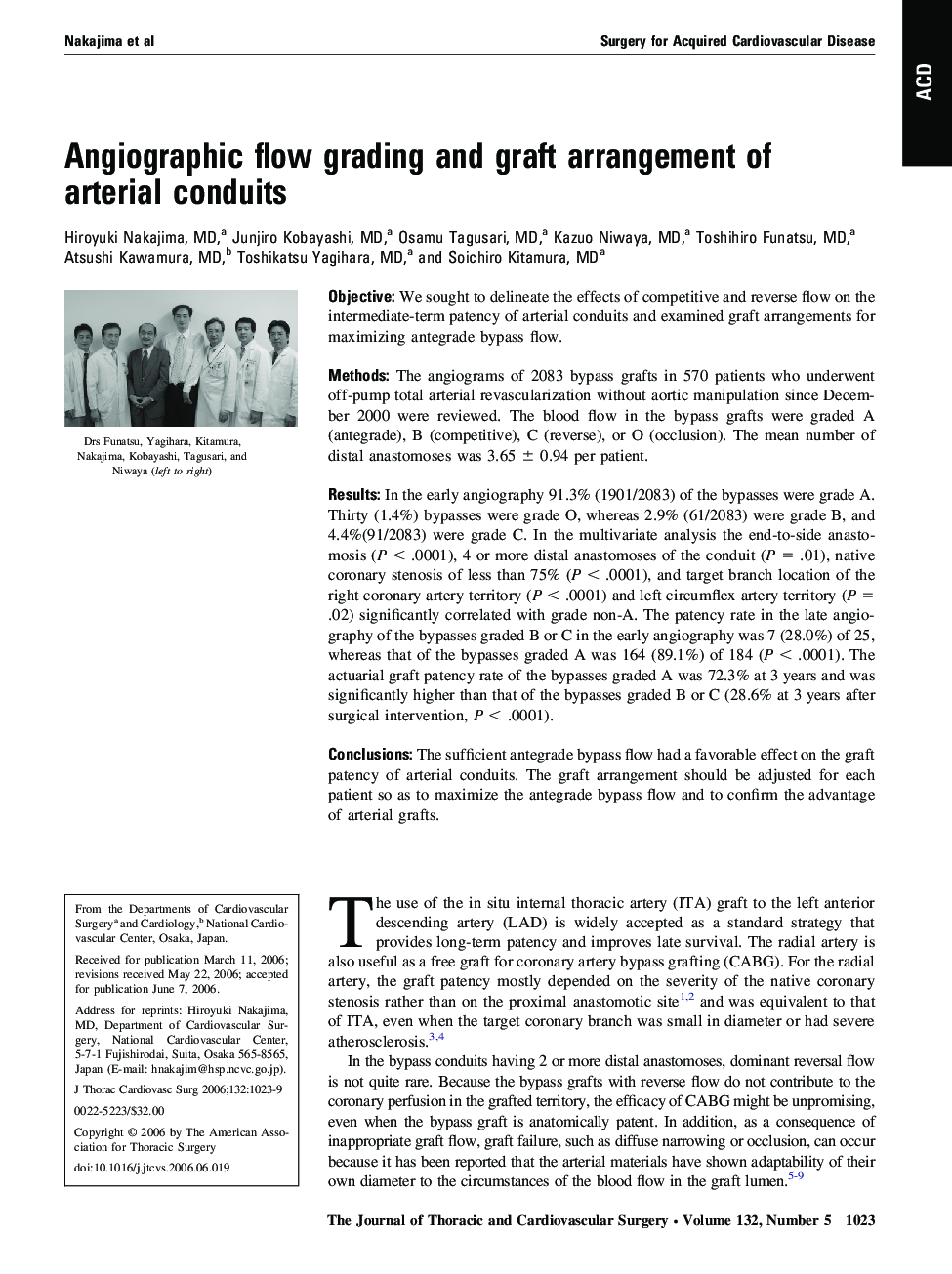| Article ID | Journal | Published Year | Pages | File Type |
|---|---|---|---|---|
| 2986431 | The Journal of Thoracic and Cardiovascular Surgery | 2006 | 7 Pages |
ObjectiveWe sought to delineate the effects of competitive and reverse flow on the intermediate-term patency of arterial conduits and examined graft arrangements for maximizing antegrade bypass flow.MethodsThe angiograms of 2083 bypass grafts in 570 patients who underwent off-pump total arterial revascularization without aortic manipulation since December 2000 were reviewed. The blood flow in the bypass grafts were graded A (antegrade), B (competitive), C (reverse), or O (occlusion). The mean number of distal anastomoses was 3.65 ± 0.94 per patient.ResultsIn the early angiography 91.3% (1901/2083) of the bypasses were grade A. Thirty (1.4%) bypasses were grade O, whereas 2.9% (61/2083) were grade B, and 4.4%(91/2083) were grade C. In the multivariate analysis the end-to-side anastomosis (P < .0001), 4 or more distal anastomoses of the conduit (P = .01), native coronary stenosis of less than 75% (P < .0001), and target branch location of the right coronary artery territory (P < .0001) and left circumflex artery territory (P = .02) significantly correlated with grade non-A. The patency rate in the late angiography of the bypasses graded B or C in the early angiography was 7 (28.0%) of 25, whereas that of the bypasses graded A was 164 (89.1%) of 184 (P < .0001). The actuarial graft patency rate of the bypasses graded A was 72.3% at 3 years and was significantly higher than that of the bypasses graded B or C (28.6% at 3 years after surgical intervention, P < .0001).ConclusionsThe sufficient antegrade bypass flow had a favorable effect on the graft patency of arterial conduits. The graft arrangement should be adjusted for each patient so as to maximize the antegrade bypass flow and to confirm the advantage of arterial grafts.
